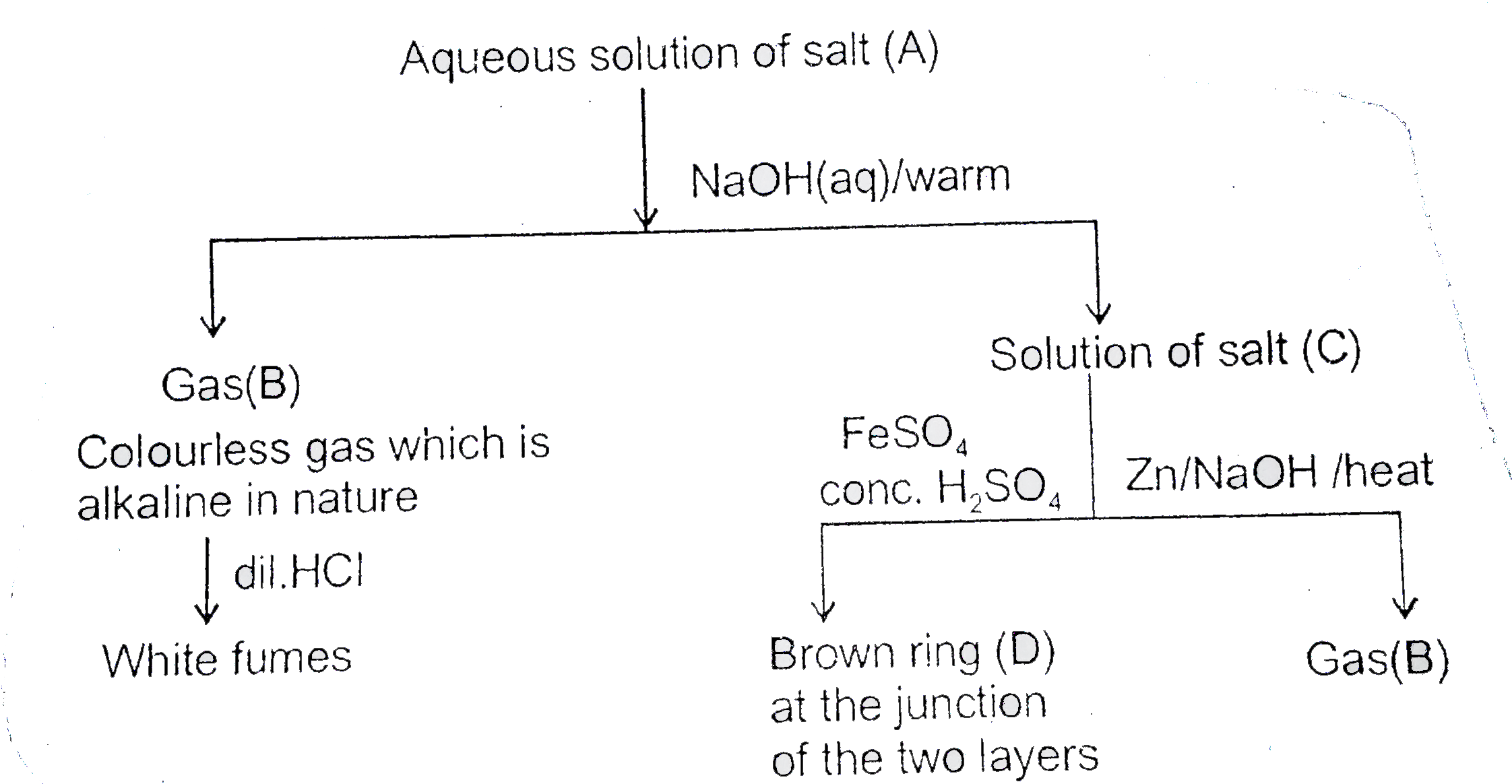Copper (II) ions gives reddish brown precipitate with potassium ferrocyanide. The formula of the precipitate is:
Cu4[fe(CN)6
Cu2[Fe(CN)6]
Cu3[Fe(CN)6]
Cu3[Fe(CN)6]2
The correct Answer is:B
To determine the formula of the reddish brown precipitate formed when Copper (II) ions react with potassium ferrocyanide, we can follow these steps:
1. Identify the Reactants:
- The reactants in this case are Copper (II) ions (Cu²⁺) and potassium ferrocyanide (K₄(Fe(CN)₆)).
2. Understand the Reaction:
- When Copper (II) ions react with potassium ferrocyanide, they form a complex compound. Potassium ferrocyanide is known to react with various metal ions to form precipitates.
3. Write the Formula for Potassium Ferrocyanide:
- The formula for potassium ferrocyanide is K₄(Fe(CN)₆). This indicates that it contains four potassium ions (K⁺), one iron ion (Fe²⁺), and six cyanide ions (CN⁻).
4. Determine the Product:
- The product formed from the reaction of Cu²⁺ and K₄(Fe(CN)₆) is known as cupric ferrocyanide. The general formula for the precipitate formed with copper (II) ions is Cu₂(Fe(CN)₆).
5. Identify the Color of the Precipitate:
- The precipitate formed is described as reddish brown, which is characteristic of cupric ferrocyanide.
6. Final Formula:
- Therefore, the formula of the reddish brown precipitate is Cu₂(Fe(CN)₆), which is also referred to as cupric ferrocyanide.
Conclusion:
The formula of the reddish brown precipitate formed when Copper (II) ions react with potassium ferrocyanide is Cu₂(Fe(CN)₆).
---
- The reactants in this case are Copper (II) ions (Cu²⁺) and potassium ferrocyanide (K₄(Fe(CN)₆)).
- When Copper (II) ions react with potassium ferrocyanide, they form a complex compound. Potassium ferrocyanide is known to react with various metal ions to form precipitates.
- The formula for potassium ferrocyanide is K₄(Fe(CN)₆). This indicates that it contains four potassium ions (K⁺), one iron ion (Fe²⁺), and six cyanide ions (CN⁻).
- The product formed from the reaction of Cu²⁺ and K₄(Fe(CN)₆) is known as cupric ferrocyanide. The general formula for the precipitate formed with copper (II) ions is Cu₂(Fe(CN)₆).
- The precipitate formed is described as reddish brown, which is characteristic of cupric ferrocyanide.
- Therefore, the formula of the reddish brown precipitate is Cu₂(Fe(CN)₆), which is also referred to as cupric ferrocyanide.
The formula of the reddish brown precipitate formed when Copper (II) ions react with potassium ferrocyanide is Cu₂(Fe(CN)₆).
Topper's Solved these Questions
- d-BLOCK ELEMENTSBOOK - VK JAISWAL ENGLISHCHAPTER - d-BLOCK ELEMENTSEXERCISE - ASSERTION-REASON TYPE QUESTIONS
32 Videos
- d-BLOCK ELEMENTSBOOK - VK JAISWAL ENGLISHCHAPTER - d-BLOCK ELEMENTSEXERCISE - SUBJECTIVE PROBLEMS
6 Videos
- CO-ORDINATION COMPOUNDSBOOK - VK JAISWAL ENGLISHCHAPTER - CO-ORDINATION COMPOUNDSEXERCISE - LEVEL 2
144 Videos
- ENVIRONMENTAL CHEMISTRYBOOK - VK JAISWAL ENGLISHCHAPTER - ENVIRONMENTAL CHEMISTRYEXERCISE - ASSERTION-REASON TYPE QUESTIONS
14 Videos
Similar Questions
Knowledge Check
Fehling solution gives red precipitate with
Aaromatic aldehydeBsaturated aliphatic aldehydeCunsaturated aliphatic aldehydeDboth b and c

Salt(A) on heating gives a colourless neutral gas which supports combustion.
From the aforesaid, flow diagram, answer the following questions.
The basic radical of salt (A) and gas B both gives brown precipitate with Nessler's reagent.The composition of the brown precipitate is:
View SolutionWhich give colored carbonate precipitate?
View SolutionThe ferrous ion in a given sample is detected by the formation of a white precipitate on the addition of a potassium ferrocyanide solution to it. The precipitate has the constitutional formula:
View SolutionA yellow solution of a salt yields a reddish brown precipitate with caustic soda solution.The precipitate does not dissolve in excess of the alkali. The reddish brown precipitate on strong heating leaves behind a red powder, insoluble in water but soluble in dilute HCI.
ldentify the metal of the salt.
View SolutionA yellow solution of a salt yields a reddish brown precipitate with caustic soda solution.The precipitate does not dissolve in excess of the alkali. The reddish brown precipitate on strong heating leaves behind a red powder, insoluble in water but soluble in dilute HCI.
Write the equation of the reaction involved.
View SolutionAmmonia/ammonium ion gives yellow precipitate with:
View SolutionA solution containing a group-IV cation gives a precipitate on passing, H2S. A solution of this precipitate in dil. HCl produces a white precipitate with NaOH solution and bluish-white precipitate with basic potassium ferrocyanide. The cation is :
View Solution
